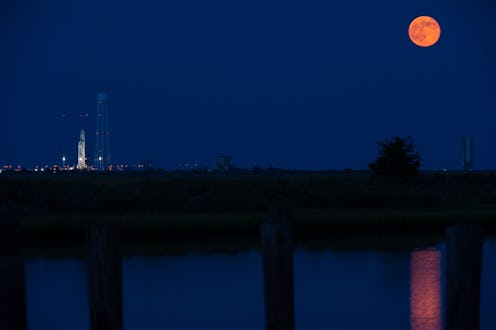News
The Moon Has Better Internet Than Us
Pope Francis may have called the Internet "a gift from God," but the amazing Internet connection on the moon leaves our own high-speed wireless in the dust. On Oct. 18, 2013, MIT's Lincoln Lab and NASA launched the Lunar Laser Communication Demonstration (LLCD), a project aiming to establish the first free-space laser communication system. Last week, just shy of Valentine's Day, the two organizations unveiled that the LLCD would no longer be just a demonstration — it's going to be launched for real.
How exactly does this laser communication system work? Well, from Sept. to Oct. 2013, NASA tried using lasers instead of radio waves to transmit data over 239,000 miles between the moon and Earth. They placed the LLCD on the Lunar Atmosphere and Dust Experiment Explorer satellite. On Oct. 28, 2013, NASA proved that the laser communication in space was, in fact, possible — they received back a signal that traveled 622 megabits per second.
As a standard for comparison, the average U.S. connection is 7.2 megabits per second. So, the moon's Internet is 86 times faster than ours.
That's probably why they were able to send an HD video to the moon and back in less than 7 seconds. In this video, you can see see the moment when the LLCD received a signal back from the moon.
Now, nearly four months after that groundbreaking moment, NASA Jet Propulsion Lab and the National Institute of Standards and Technology have released further information about the little device that they're using to communicate with the moon.
So just how little is it? It's 1.5 by 3 centimeters. The future may be big but the technology for it is teensy.
